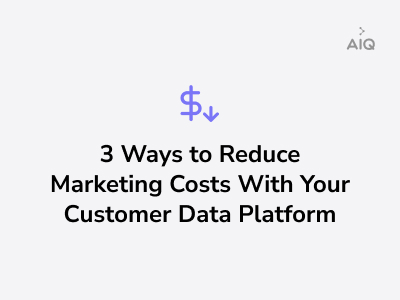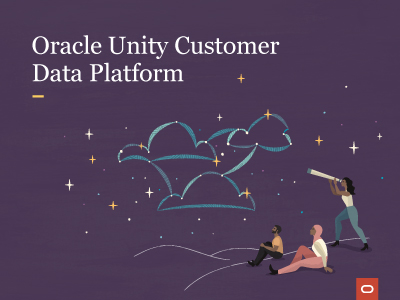How to Put the ‘Real’ in Real-Time Customer Experiences
July 15, 2021Imagine you’re eating out at a new restaurant. Your waiter seems to know what you want even before you do. They take your order, bring your food and leave your check with lightning-fast efficiency.
Worthy of a big tip and a five-star review, right? Not so fast. Speed alone doesn’t drive exceptional customer experiences. If your server gets your order wrong or brings you someone else’s bill, it doesn’t really matter how quickly they did it.
While there are plenty of technology vendors who say they can help you deliver real-time customer experiences, they often force you to skimp on experience for speed. Truly impactful brand interactions — the kind that turn your buyers into brand advocates — require timeliness and deep personalization.
If you want to provide tailored customer experiences in real time, cutting through the noise and understanding what’s required to get there will give you a competitive advantage.
Detection, Decision, Action
Real-time customer experiences are built on three core components: detection, decision and action. In other words, you need technology that enables you to identify relevant events, determine what the appropriate response is and then initiate it.
Maybe you’re a retail brand that wants to engage high-intent shoppers. You get notified that someone added one of your products to their online cart but left your website before completing their purchase. How should you follow up?
First you’ll want to understand how this event fits into their overall customer profile. Is this a new purchase or something they buy regularly? What else have they recently purchased, browsed in app or clicked on in an email? These and other signals will tell you what they actually want. Next you’ll want to make sure your messaging is related to the product they showed interest in and that you reach out on their preferred communication channel. Finally you’ll want to decide how long after they abandoned their cart you should wait before giving them a nudge.
Or maybe you’re a financial institution that wants to educate your customers on products and services relevant to their circumstances. You receive an update that one of your customers just deposited a very large sum into their savings account. What’s the next step?
You’ll want to know if the deposit is related to any recent life events. Next you’ll want to understand their investment history with your organization. Have they put money into retirement planning in the past or expressed interest in mutual funds? Lastly you’ll want to understand when it makes the most sense to reach out to them and on which channel.
Scenarios like these highlight an essential fact: Effective real-time customer experiences aren’t always about immediately taking action — they’re about taking the right action in the right place at the right time. How and what you decide to do is just as important — if not more so — than detecting and acting on an opportunity.
Continuous Intelligence
Speed is crucial to real-time customer experiences, but it’s only one piece of the puzzle. You need technology that enhances your decision-making and empowers you to activate personalized customer experiences across channels and at scale to drive customer loyalty.
But too many technologies provide speed without intelligence, prescribing next steps based on information that’s siloed by channel and limited to in-the-moment customer signals instead of the full historical view. And those that do provide the intelligence you need do so without the necessary speed or ability to transform customer data into scalable, channel-specific customer experiences.
According to Gartner, real-time customer experiences that drive revenue, reduce costs and improve customer satisfaction are built on continuous intelligence. And continuous intelligence requires three key capabilities:
- The ability to repeatedly ingest real-time data from multiple sources and use your historical customer data to complement it
- The ability to analyze your data to identify trends, anomalies and patterns that will help you better understand different situations
- The ability to prescribe appropriate responses, whether for your brand representatives or your automated systems
The “continuous” portion of continuous intelligence is based on the results of whatever action you carry out. The performance of your real-time customer experience strategy becomes another ingested data point that will be used to inform and improve analysis and response over time.
Plenty of technologies promise real-time capabilities, but as Gartner makes clear, decision-making that’s backed up by intelligence will drive a better customer experience.
Connecting the Dots
Your existing tech stack is a treasure trove of valuable customer data. You don’t need a shiny new piece of software that will ignore the actionable information at your fingertips and focus only on contextual details. You need a solution that will connect the dots between your different systems, allow them to talk to each other and provide you with a comprehensive customer profile so you can quickly and confidently orchestrate a personalized experience.
In today’s experience economy, CX is the ultimate differentiator. Seventy-three percent of companies that provide superior customer experiences financially outperform their competitors. And not only are the vast majority of consumers more likely to become brand loyalists in return for personalized customer experiences, they’re willing to pay 17% more for products and services when they know they can rely on a brand for exceptional CX.
You know how valuable customer experience is to your organization — so you also know it pays to get it right. Start by making sure the data powering your real-time customer experiences is accurate, accessible and actionable.
Learn More
Check out our Real-Time Customer Experiences (RTCX) solution brief to learn how ActionIQ’s customer data platform can help you fuel fast, intelligent customer experiences and achieve your real-time CX goals.
This post first appeared on the ActionIQ blog. To see the full article, click here.


